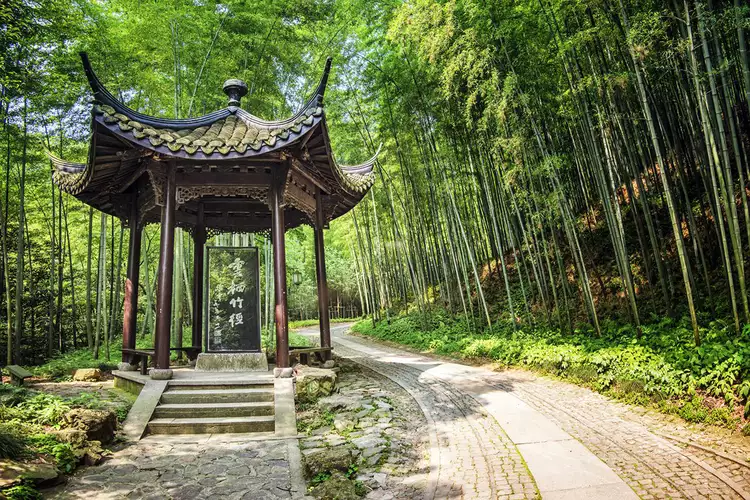Summary of Hangzhou Travel Guide
Marco Polo visited Hangzhou in 1290 and was so overwhelmed by the beauty of the Xi Hu, or West Lake, that he transcribed, and thus popularized, a famous Chinese saying “Shang you tiantang, xia you Suhang,” which means “in heaven there is paradise, on earth there is Su[zhou] and Hang[zhou].” Chinese now like to call Hangzhou “Paradise on Earth”. It’s a lofty nickname, but a visit to Hangzhou does provide a lovely, if not peaceful, alternative to the hustle and bustle of Shanghai and other larger Chinese cities.
Location
Hangzhou is the capital of Zhejiang province. With a population of around 6.2 million, it is one of China’s smaller cities and feels more like a big town despite a population twice that of Chicago. Sitting 125 miles or about two hours by car to the southwest of Shanghai, Hangzhou is an easy visit to combine with a trip there.
Features
When visiting Hangzhou, make sure you check out some of its popular attractions:
- Xi Hu or West Lake: Hangzhou’s tourist destinations are dominated by the West Lake. It is, by far, Hangzhou’s most prominent feature. The large lake sits in the middle of the city and is surrounded by ancient temples and gardens. Within the lake itself, there are multiple islands to visit, a causeway that is lovely for walks, or cycling tours with many grand views.
- Longjing Tea Fields: China is famous for tea, and the most famous tea in China comes from the hills around Hangzhou. Longjing or Dragon Well tea is China’s most celebrated green tea. It is worth a short drive out into the countryside to visit the villages that grow tea and sip some in one of the many open-air tea houses that line the roadway.
- Temples and Pagodas: Taoism and Buddhism prospered in Hangzhou and serene Lingyin Temple was saved from Cultural Revolution destruction at Zhou Enlai’s behest. Walking through the serene gardens and temples of Hangzhou’s religious sites is a walk through time.
Getting There
- Air: Hangzhou’s Xiaoshan International Airport is 17 miles outside of the city center. However, most international visitors come by rail, car, or bus from Shanghai.
- Car: It is possible to negotiate a Shanghai taxi to take you to Hangzhou and vice versa. The trip will take approximately 2 hours if there is little traffic on the roadway, and it may cost quite a bit.
- Bus: Tourist buses run back and forth between Shanghai and Hangzhou. There is a shuttle bus from Shanghai’s Pudong International Airport to Hangzhou’s Yellow Dragon tour bus center that has six departure times throughout the day. The trip takes about 3.5 hours. There are also many tourist buses departing from other bus terminals in both cities. Check with your hotel for ticket information.
- Rail: Railway is by far the most efficient means of getting between Shanghai and Hangzhou. Both cities have two stations with multiple trains departing throughout the day. The trip takes under an hour by high-speed train or between 1.5 to 2 hours on the regular line, thus offering an inexpensive option. Hangzhou is connected to other major destinations such as Beijing, Guangzhou, Xi’an, and Guilin.
Essentials
- Weather: Hangzhou’s climate is comparative to Shanghai’s. The average annual temperature is 61 degrees Fahrenheit, and the annual average number of rainy days is 155. Rainy season falls in mid-June. Spring is from March to May, while autumn spans from September to November.
- Recommended Time for Visit: 2 days/2 nights.
- Best Time of Year to Visit: Spring and autumn. Summer can become very hot and humid, potentially making sightseeing uncomfortable. Winter might be too cold to enjoy the many outdoor scenic spots.
Tips
- Bring rain gear, as you will probably experience at least one day of rain.
- Consider renting a bike. It’s one of the best ways to get around Hangzhou and allows you to stop at your leisure to enjoy the views of pagodas towering on the hillsides.
Where to Stay
- You can find numerous types of budget accommodations in Hangzhou.
Helpful Resources
- Travel Guide Hangzhou: The Hangzhou Tourism Commission publishes a comprehensive brochure pocket travel guide. The guide includes fold-out maps as well as information on transportation, major sites, hotels, dining, and shopping.





